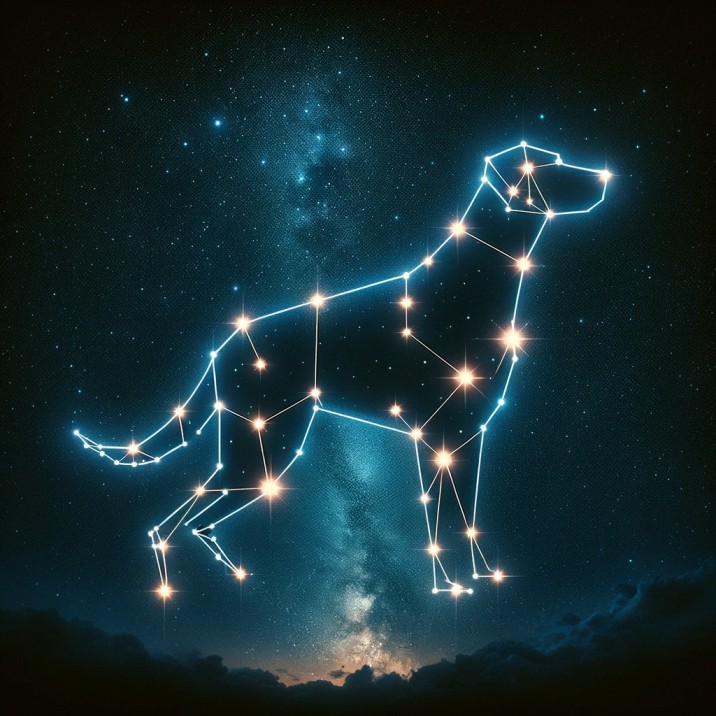Canis Major, one of the ancient constellations, was not discovered by a single individual but has been known since antiquity. It was cataloged by the Greek astronomer Claudius Ptolemy in the 2nd century in his work “Almagest.” The constellation has been recognized and depicted in various cultures over the centuries.

Canis Major, often referred to as the “Great Dog” constellation, is one of the most recognizable constellations in the night sky, rich in history and astronomical significance.
Historical Perspective
The recognition of Canis Major as a constellation dates back to antiquity. It was among the 48 constellations listed by the 2nd-century Greco-Roman astronomer Claudius Ptolemy in his seminal work, the “Almagest.” Ptolemy’s compilation was based on earlier astronomical traditions, likely drawing from Babylonian and perhaps even more ancient sources.
Cultural Significance
Over the centuries, Canis Major has been a prominent feature in the mythology and star lore of various cultures. In Greek mythology, it is often associated with the myth of Orion, the hunter, representing one of his hunting dogs. This association is reflected in the constellation’s proximity to Orion in the night sky.
Astronomical Features
Canis Major is most notable for containing Sirius, also known as the Dog Star, which is the brightest star in the night sky. Sirius has been of great importance in astronomy and navigation due to its brightness and the fact that it’s visible from almost every inhabited region of the Earth’s surface.
The Constellation’s Composition
The constellation is composed of several other stars that, when connected, resemble a dog in shape. It includes a variety of deep-sky objects, such as star clusters and nebulae, which are of interest to astronomers.
Modern Astronomy
In contemporary astronomy, Canis Major is one of the 88 constellations recognized by the International Astronomical Union (IAU). It remains a subject of study and interest, both for professional astronomers and amateur stargazers.
The discovery of Canis Major cannot be attributed to a single individual but is a culmination of centuries of observational astronomy. Its brightest star, Sirius, has been a beacon in the night sky for countless generations, guiding sailors and fascinating astronomers. Canis Major, with its rich mythological associations and prominent stars, continues to be a fixture of the celestial sphere, a testament to the enduring human endeavor to understand the cosmos.


